No products in the cart.
NEWS
Grow Your Own Superfoods: Easy Choices for a Nutrient-Packed Home Garden
For many of us, the desire for better health leads us to explore the power of “superfoods.” These are foods celebrated for their exceptional nutrient density, offering a concentrated dose of vitamins, minerals, antioxidants, and compounds that support various aspects of well-being, from bolstering immunity to promoting heart health. Often, we imagine superfoods as exotic ingredients found only in specialty stores. However, numerous incredibly beneficial foods can be cultivated right in your own home or garden, often with surprising ease, even for beginners.
Cultivating your own vegetables, herbs, and fruits ensures you have access to fresh, potentially organic produce, harvested at its peak nutritional value. This direct farm-to-table approach significantly enhances the health benefits you receive from every bite. As experts in both growing and beneficial inputs at Biogarden.asia, we’ve found that starting a superfoods garden is not only rewarding but also remarkably accessible. Here are seven superfoods that are surprisingly straightforward to grow, perfect for anyone looking to boost their health from their backyard or even a sunny windowsill.
1. Ginger: The Spicy Root of Wellness
Adding ginger to your home garden is a game-changer you won’t regret. This low-maintenance root crop thrives away from direct sunlight, making it an excellent candidate for indoor container growing. Yet, its health benefits are anything but understated. Ginger is renowned for its natural ability to soothe nausea, ease digestive discomfort like bloating and gas, and potent anti-inflammatory properties. Its antioxidants help protect your cells from damage.
Evidence also suggests that incorporating ginger into your diet can positively impact heart health, potentially contributing to lower blood pressure and more stable blood sugar levels. Growing it yourself is as simple as starting with a piece of healthy-looking ginger root from the grocery store.
Choose a piece roughly 4 to 5 inches (12-15 cm) long with visible “eyes” or buds. Snap off a smaller section, about 1 to 2 inches (2.5-5 cm), ensuring it has at least one bud. Let the cut end dry and heal for a day or two in a warm spot. Then, plant it horizontally in a container filled with potting soil, burying it just an inch (2.5 cm) deep. Water thoroughly initially, then allow the soil to dry slightly between waterings.
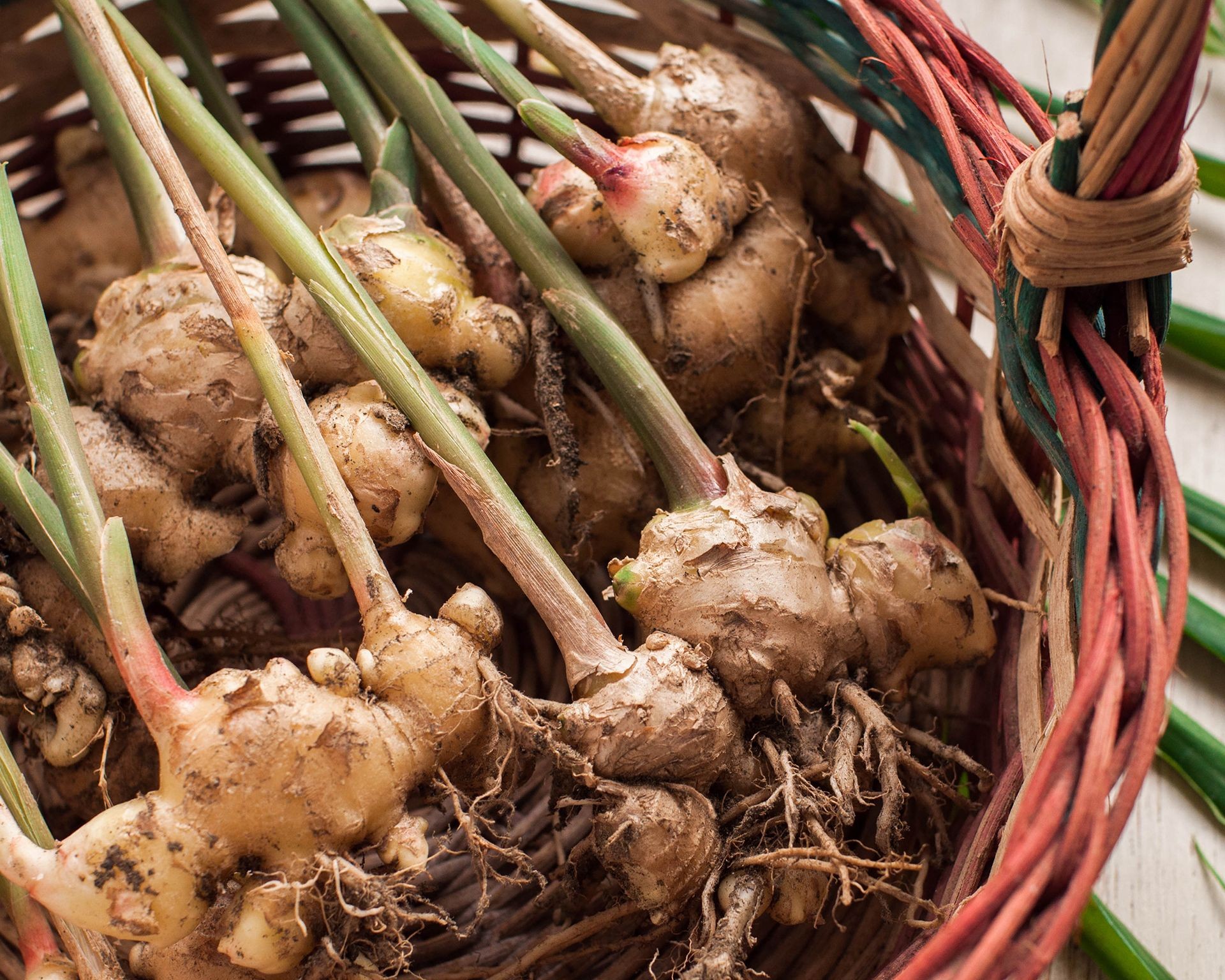 Fresh ginger root harvested and placed in a rustic basket
Fresh ginger root harvested and placed in a rustic basket
While it takes about 10 months for ginger plants to fully mature for a significant harvest, growing a continuous supply is easy with succession planting on a kitchen windowsill. Our experience at Biogarden.asia confirms that fresh ginger harvested at home offers an unmatched vibrancy.
2. Microgreens: Nutrient Powerhouses in Miniature
Microgreens, the tiny seedlings of herbs and vegetables harvested early in their growth cycle, are not only a delightful culinary addition but also incredibly nutrient-dense. Sprinkled over salads, sandwiches, or used as a vibrant garnish, they pack a punch of flavor and nutrition.
These miniature plants often contain higher concentrations of vitamins, minerals, and antioxidants compared to their mature counterparts. Research indicates microgreens can support healthy gut function, contribute to lower cholesterol and blood pressure, and may even play a role in managing chronic diseases.
Growing microgreens at home is arguably one of the easiest and quickest ways to cultivate your own food. All you need is a shallow tray, some fine compost or growing medium, and seeds. While salad leaves like loose-leaf lettuce varieties are classic choices for beginners, you can also grow microgreens from herbs such as basil, cilantro, and parsley, or vegetables like broccoli, carrots, beets, corn, and peas.
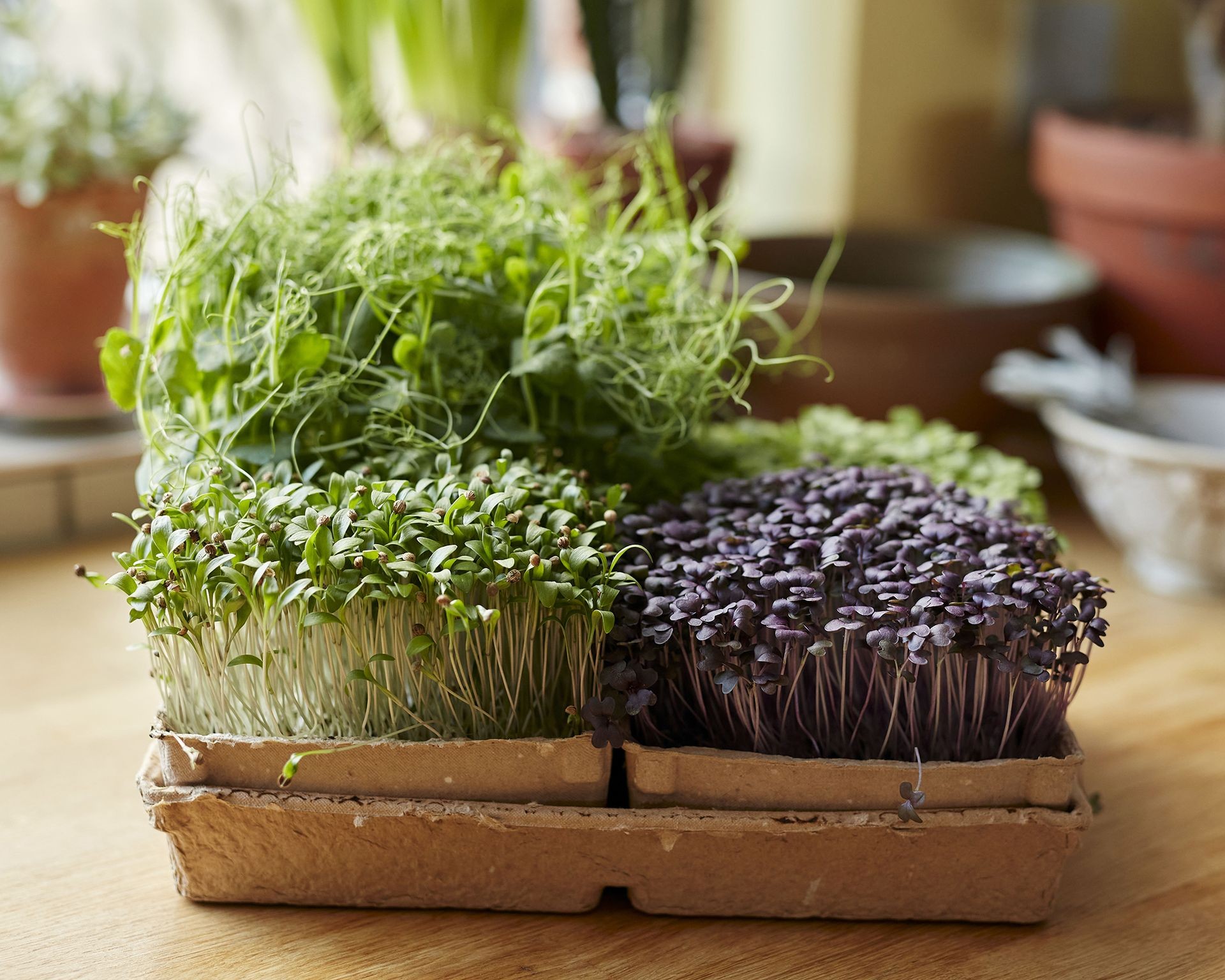 Tray of bright green microgreens growing indoors on a windowsill
Tray of bright green microgreens growing indoors on a windowsill
For a steady supply, purchasing seeds in bulk is more economical than using standard seed packets. Sow seeds densely across the surface of the compost, cover with a thin layer of medium, and water gently until damp. Place the tray on a bright windowsill. Covering the tray with a clear plastic lid or bag can help maintain humidity and speed up germination. You can harvest your microgreens with scissors when they reach 1-2 inches tall, which could be as soon as a few days or a couple of weeks, depending on the variety.
3. Kale: The Leafy Green Giant
Kale has rightfully earned its status as a superstar in the world of nutrient-rich greens. This robust leafy vegetable boasts impressive levels of essential vitamins and minerals. For instance, it contains significantly more vitamin C and selenium than spinach (another fantastic, easy-to-grow superfood), alongside substantial amounts of vitamin K, vitamin E, iron, calcium, and beta-carotene.
Consuming kale is linked to supporting a strong immune system, promoting healthy vision, helping regulate blood pressure, and potentially reducing the risk of certain cancers.
Growing kale is remarkably straightforward, even for novice gardeners. These plants are resilient, adapting well to various conditions and even tolerating cooler temperatures, making winter harvests possible in milder climates. While adaptable, kale thrives in well-drained soil in a sunny location.
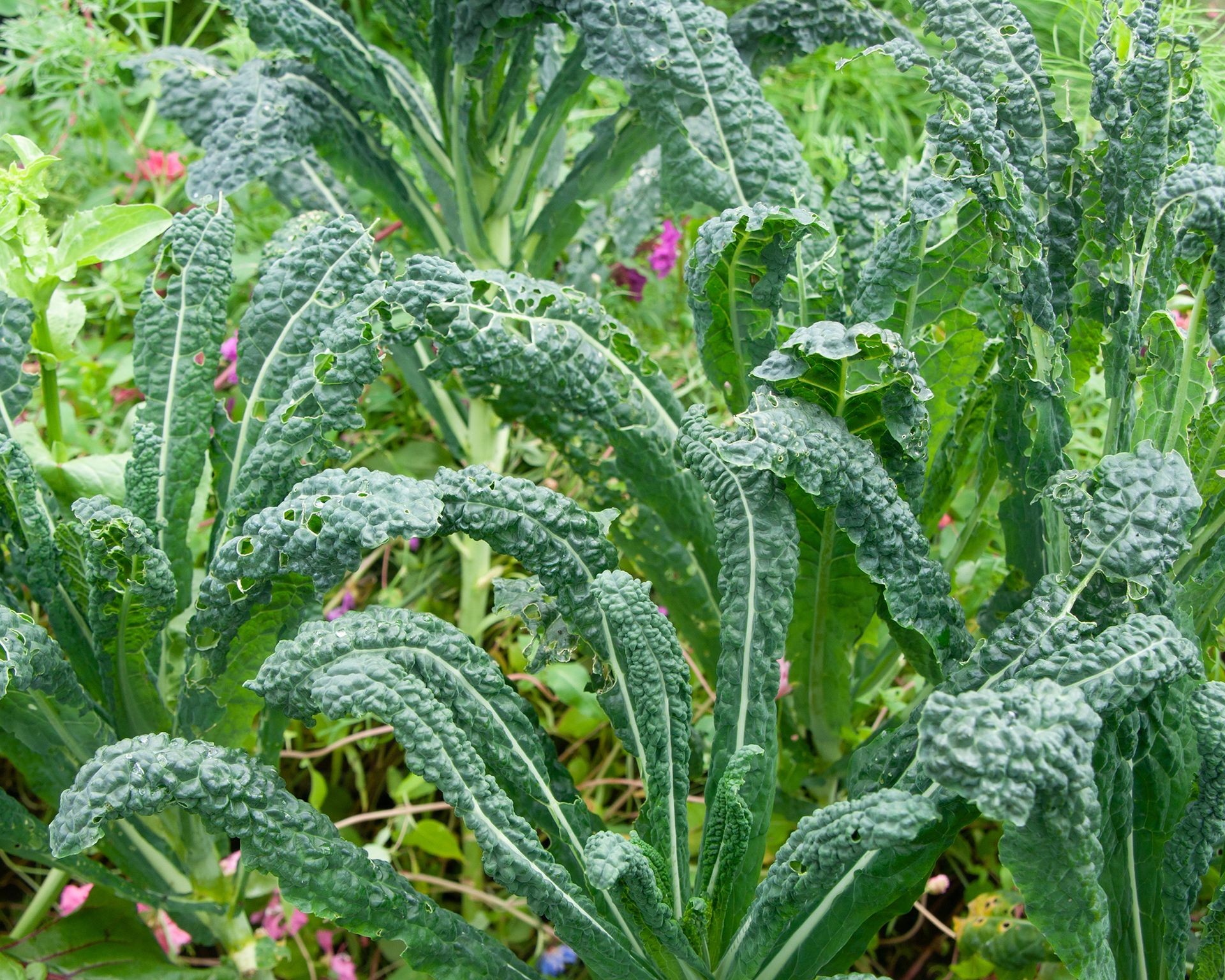 Vibrant green kale growing upright in a garden bed
Vibrant green kale growing upright in a garden bed
Ideal planting occurs when soil temperatures are between 60 to 65°F (16-18°C), though it struggles in intense summer heat. Kale matures relatively quickly, typically within about two months from planting. Starting seeds indoors in small pots or trays filled with potting soil provides a head start on the growing season. Sow seeds thinly, cover with about half an inch of soil, and keep moist until germination. Once the risk of frost has passed, seedlings can be transplanted into the garden bed.
4. Sweet Potatoes: Underground Goodness
Beyond their delicious taste, sweet potatoes are nutritional powerhouses, particularly rich in carotenoids like beta-carotene, powerful antioxidants that help combat cellular damage. They are also known for their ability to support healthy blood sugar balance and contribute to good digestive health due to their fiber content. While the familiar orange varieties are common, purple sweet potatoes are especially noted for containing anthocyanins, antioxidants that research suggests may have anti-cancer properties.
For gardeners in warmer regions (USDA zones 9-11), growing sweet potatoes is notably simple. However, with some planning, they can still be successfully cultivated in cooler zones, provided you have a growing season of at least 120 frost-free days. Sweet potatoes need warm soil, ideally between 70 to 80°F (21-26°C). They are typically started in mid-summer to ensure sufficient soil warmth for vigorous growth.
Unlike traditional potatoes, sweet potatoes grow from “slips,” which are sprouts from a mature sweet potato tuber, forming long vines. Once planted, sweet potatoes require minimal ongoing care, primarily needing attention to weed control. They are relatively quick to develop, often ready for harvest in about six weeks after planting the slips, depending on the variety and conditions.
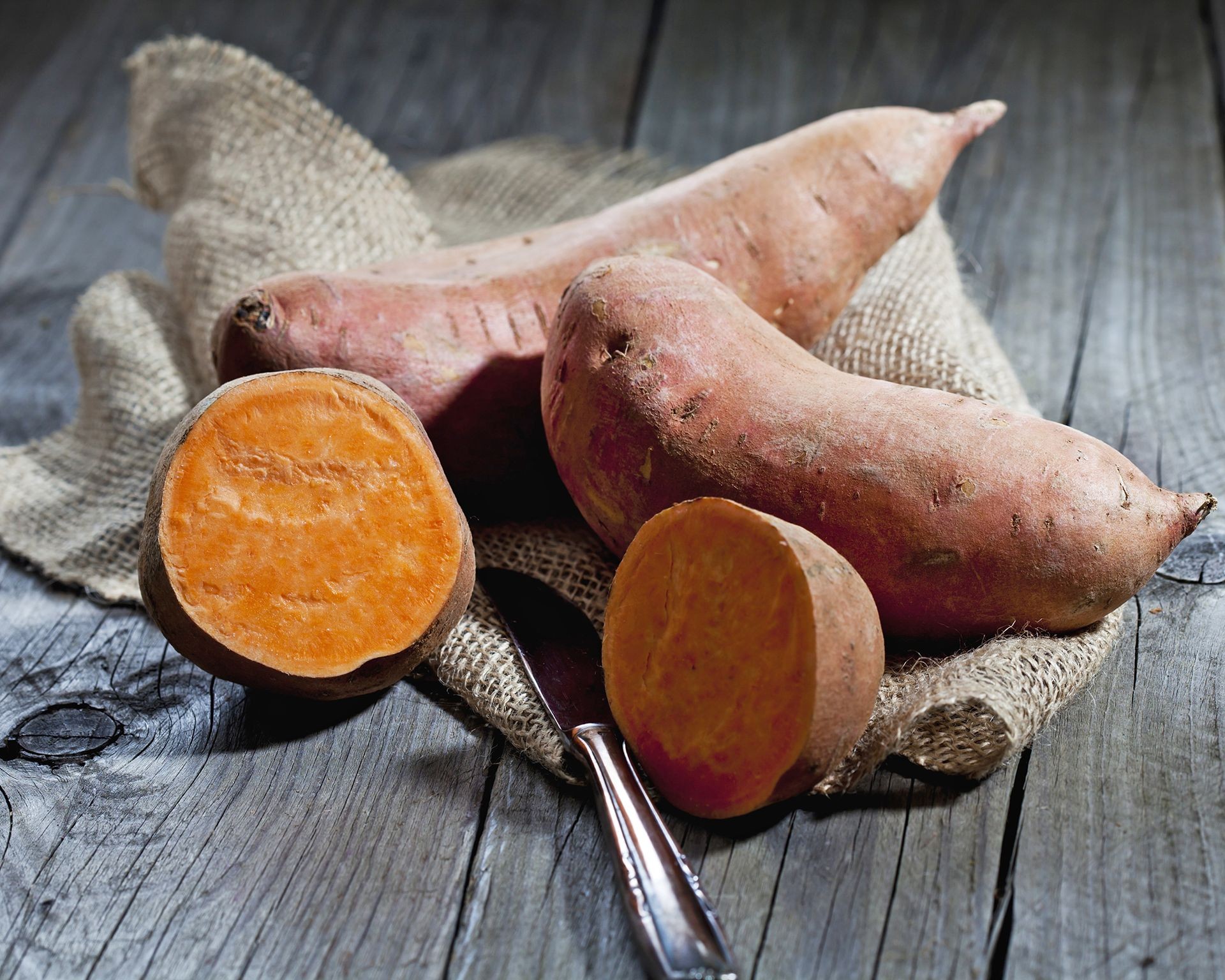 Several harvested sweet potatoes, including orange and purple varieties, displayed on a wooden table
Several harvested sweet potatoes, including orange and purple varieties, displayed on a wooden table
Our insights at Biogarden.asia emphasize the importance of soil temperature and choosing appropriate varieties for your climate to ensure a bountiful sweet potato harvest.
5. Beets: From Root to Leaf
Beets are packed with essential nutrients, acting as potent antioxidants with significant anti-inflammatory capabilities. The vibrant red varieties owe their color, in part, to betacyanin, a compound showing promise in cancer-fighting research.
Beets are not only easy for beginners to grow but also excel as a space-efficient crop, fitting neatly into smaller garden spaces or filling in gaps. They are a cool-weather crop, thriving in spring and fall, and can even be grown through winter in many milder climates. Avoid planting them in the intense heat of summer. For northern gardens, wait until the soil temperature reaches at least 40°F (4°C).
Plant beet seeds about 1 to 2 inches (2.5-5 cm) apart in rows, covering them lightly with loose soil before watering gently. Seedlings typically emerge within one to two weeks, and the roots are usually ready for harvest in about seven to eight weeks.
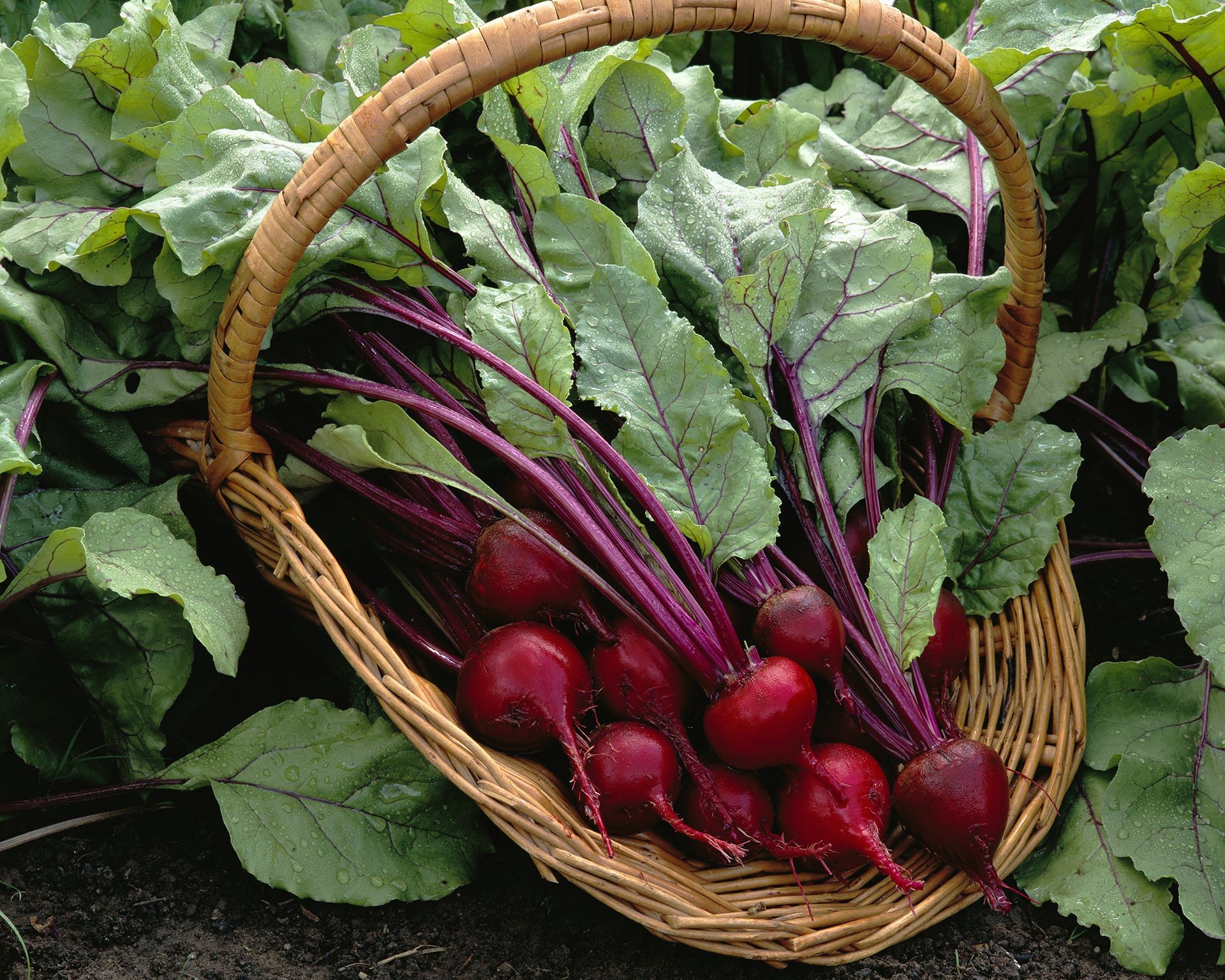 Basket overflowing with freshly harvested red beets and their green tops
Basket overflowing with freshly harvested red beets and their green tops
A wonderful bonus is that the greens, or beet tops, are also edible and highly nutritious, offering a second harvest from the same plant. If you enjoy beets, consider growing Swiss chard, a close relative with similar growing needs and fantastic nutritional value, also simple for beginners.
6. Garlic: More Than Just Flavor
Beyond its indispensable role in cuisines worldwide, garlic stands tall as a nutritious superfood. It’s prized for its strong antioxidant, anti-inflammatory, and anti-microbial properties. These qualities are believed to contribute to its potential role in supporting cardiovascular health and offering protective effects against certain cancers.
Growing garlic is surprisingly easy, though it requires patience as the bulbs take around nine months to mature. The good news is that once planted, garlic is largely a “plant and forget” crop until harvest time. It requires a period of cold temperatures to develop properly, so planting in the fall, roughly four to six weeks before the ground freezes, is ideal in colder climates. In areas with milder winters, garlic can be planted throughout the winter months but generally before February.
To plant, simply separate a garlic bulb into individual cloves. Plant each clove about an inch (2.5 cm) deep with the pointed end facing upwards and the fatter, root end down. Space the cloves 2 to 4 inches (5-10 cm) apart. Minimal fertilization is needed occasionally. Your garlic is ready to harvest when the plant’s leaves begin to turn brown and wither.
The simplicity of growing garlic makes it a rewarding addition to any home garden, providing a steady supply of this flavorful and health-boosting ingredient.
7. Tomatoes: The Backyard Favorite
Tomatoes are a perennial favorite among beginner gardeners, and it’s great news that they are also incredibly potent superfoods. They are brimming with vitamins, antioxidants, and beneficial carotenoids like lycopene, lutein, and beta-carotene.
Consuming tomatoes is associated with potential benefits for heart health, eye function, and brain health, as well as potentially contributing to cancer prevention. The key to successfully growing tomatoes lies in selecting a variety that suits your personal preferences, available space (containers vs. garden bed), and local climate zone.
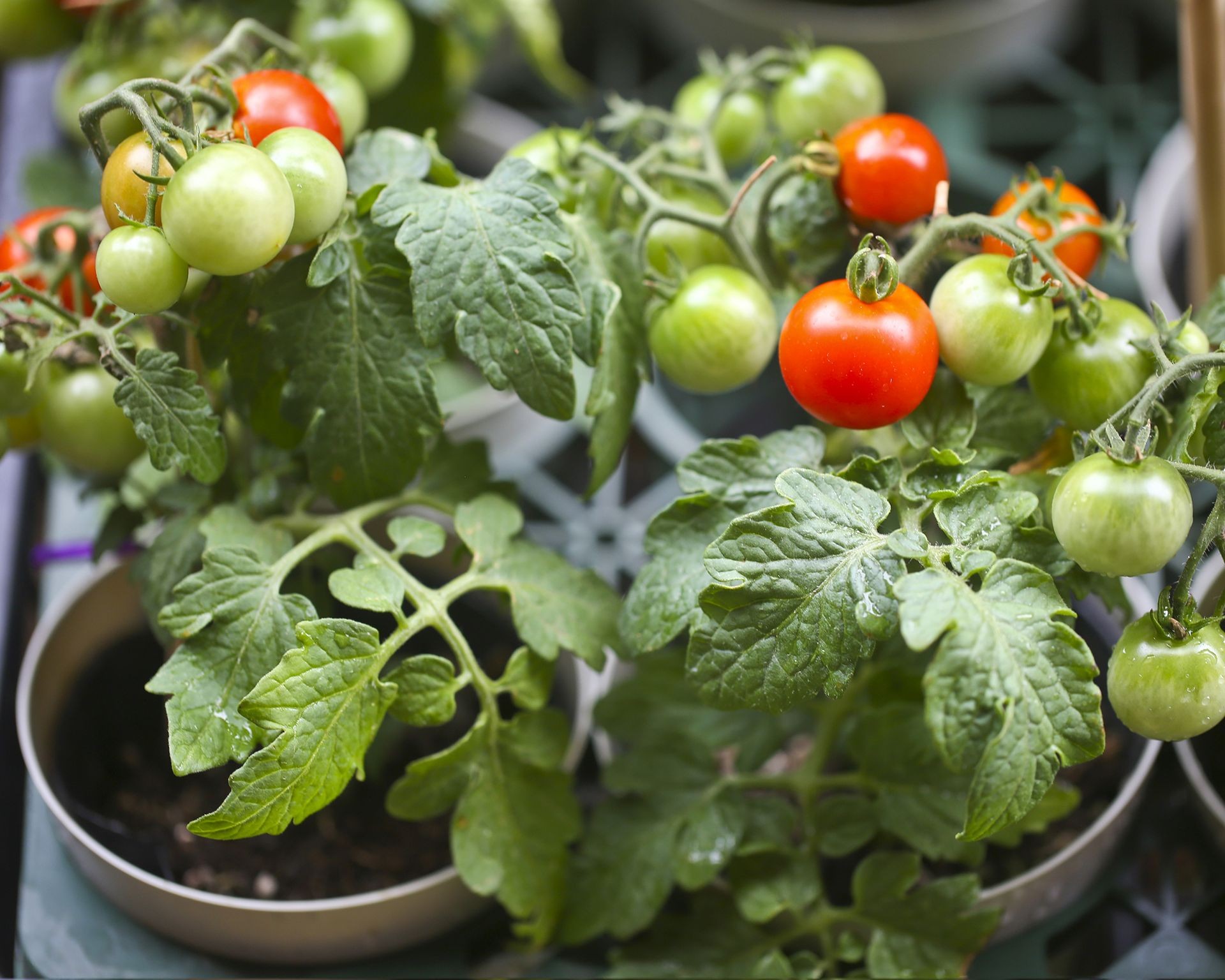 Several tall, vibrant green tomato plants heavily laden with ripening red tomatoes on their vines
Several tall, vibrant green tomato plants heavily laden with ripening red tomatoes on their vines
Cherry tomatoes, for example, are often the easiest to grow, mature early, are perfect for snacking, and perform well in containers. Heirloom varieties are popular for their unique flavors and heritage, often thriving in specific regional conditions. You can start tomatoes from seed or purchase seedlings. They require soil rich in organic matter, such as compost, and benefit from consistent feeding and watering. Seeds are typically started indoors six to eight weeks before the last expected frost and must be gradually acclimatized to outdoor conditions (“hardened off”) before transplanting into the garden. Tomatoes need plenty of direct sunlight and protection from strong winds. Staking the plants provides essential support as they grow and become heavy with fruit. They are sensitive to cool temperatures and require average temperatures of 65°F (18°C) or higher for the fruits to ripen properly.
Cultivating tomatoes offers the immense satisfaction of harvesting sun-ripened fruit, a true superfood easily accessible from your own backyard.
Growing these superfoods at home demystifies healthy eating and connects you directly with your food source. It’s a rewarding journey that offers fresh, nutrient-dense produce right outside your door. We at Biogarden.asia encourage you to explore the possibilities of your own superfoods garden. Start small, perhaps with just one or two of these easy options, and experience the joy and health benefits of harvesting your own nutritious bounty. Visit Biogarden.asia for more gardening tips, resources, and products to help you on your journey to a healthier, more sustainable lifestyle.



